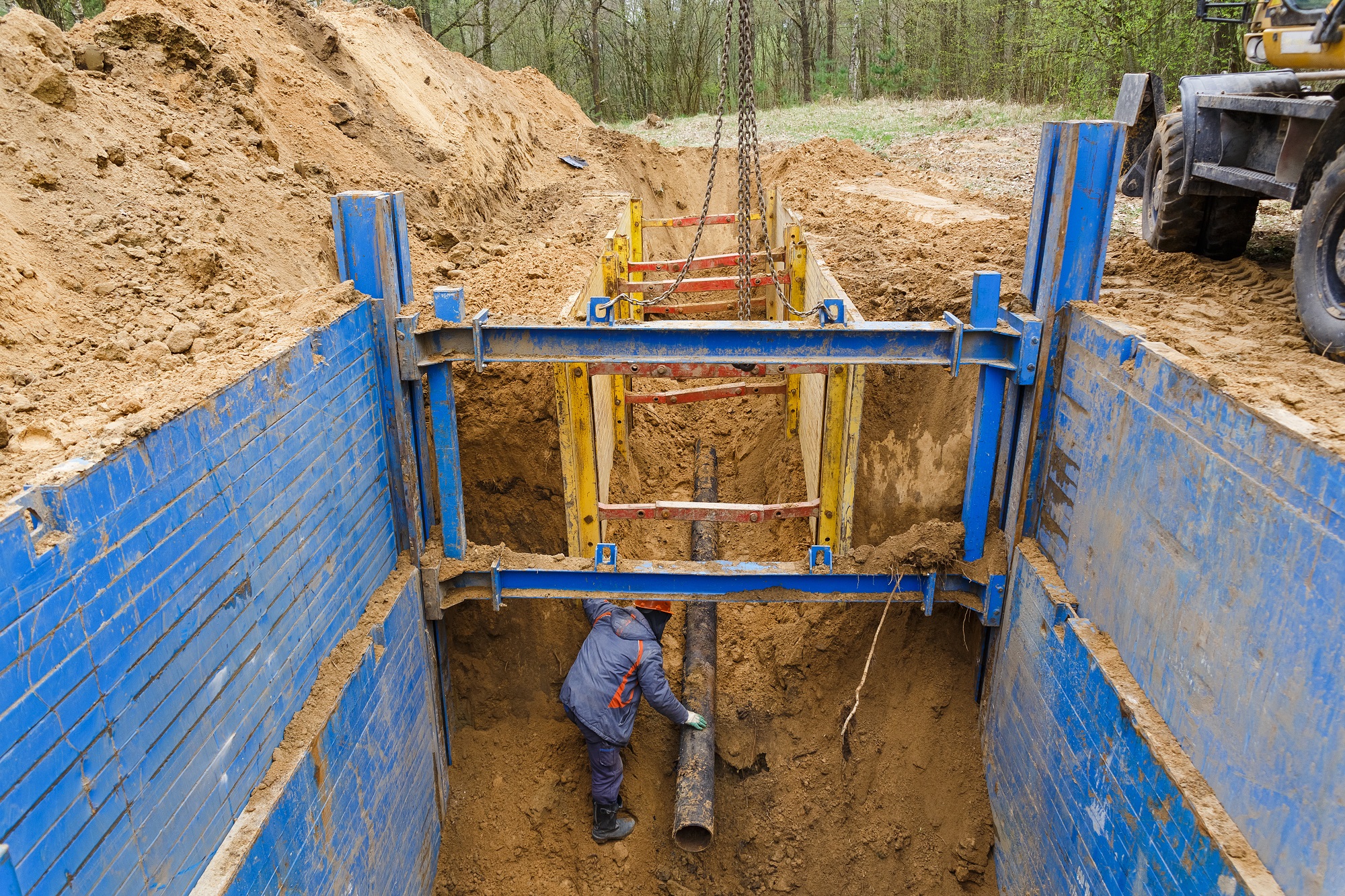Trench Safety, an employee sustained fatal injuries when an unprotected trench collapsed on him as he worked.
Arrow Plumbing LLC has admitted to violating the U.S Department of Labor’s Occupational Safety and Health Administration (OSHA) safety standards with regards to trench safety. They failed to enforce and require the use of trench boxes and other trench protection techniques at a construction site located in Belton, Missouri. An employee sustained fatal injuries when an unprotected trench collapsed on him as he worked.
The Missouri company and its successor company R2 plumbing LLC agreed to implement several safety enhancements. This included implementing a trench safety program, conduct health and safety audits; providing training for employees; reporting incidents and near misses to OSHA; conduct meetings to address hazards and completing OSHA training courses. A civil monetary penalty of $225,000 will also be paid by the company.
“This settlement serves as a commitment by the employer to abate the identified workplace hazards and implement additional safety measures to make their workplaces safer. The employer has also committed to ensuring continuous compliance with OSHA safety standards to prevent tragedies such as trench collapses from recurring.” said OSHA Acting Regional Administrator Bonita Winingham.
The agreement resolves similar incidents following a December 2016 trench fatality and a January 2017 inspection where company employees were deemed to be working in an unprotected trench.
According to OSHA, 2 workers are killed every month in trench collapses. We will go through some reminders that may be life-saving.
OSHA requires that each worker in a trench should be protected by a cave-in by protective systems, including:
Cutting: Creating stepped bench grades (for Type A/B soil only)
Shoring: Installing types of supports such as aluminum, to prevent soil movement and/or cave-ins improves trench safety
Sloping: Cutting back trench wall at incline angle away from excavation.
Shielding: Using trench boxes or other forms of support to prevent soil cave-ins.
OSHA calls an unprotected trench an “early grave”. Here are a few safety basics of trench safety that all employees should be aware of:
- Never enter an unprotected trench under any circumstance.
- Inspect trenches at start of each shift.
- Inspect trenches post heavy rainfall.
- Test for low oxygen and hazardous fumes.
- Be aware of where underground utilities are.
- Never work under raised loads.
- Make sure surcharge loads are at least 2 feet from trench edges.
- A competent person must inspect trenches daily.
- Provide a safe way of exiting the trench within 25 feet of workers.
- Always ensure excavated materials and equipment is at least 2 feet back from the trench edge.
- Trenches 5 feet or deeper must have a protective system unless the entire excavation is comprised of stable rock.
- Trenches 20 feet or deeper require a protective system designed by a registered professional engineer.
Collapses aren’t the only dangers of trenches. Other dangers include falling loads, falls, hazardous atmospheres and also incidents that involve mobile equipment.
IMEC Technologies provides Safety Management Software to increase worker safety and aid compliance. IMEC’s Safety Management Software will manage inspections and audits, provides hazard identification, incident reporting, management of corrective and preventative actions from generation to closure. IMEC provides lock out tag out software solutions that will allow users to create lockout tagout procedures using an intuitive Mobile App and Manage Lockout Tagout Procedures, also the Review and Execution of those Lockout Tagout Procedures using the Mobile App. Annual Lockout Tagout Procedures audits are conducted using a Mobile App. The Mobile Inspection App allow users to perform inspections and audits, for example the system can be used as a Fire Extinguisher Barcode Inspection Software system to manage monthly fire extinguisher inspections and general fire safety inspections and also to record safety observations and manage corrective actions, anywhere and anytime. The solution can be used as a fire extinguisher barcode inspection software system or life safety inspection system to aid compliance in Higher Education, Healthcare, Industrial and Commercial Organizations. Benefits from a Fire Extinguisher Barcode System include the elimination of paperwork and reducing the burden of compliance with regulations such as NFPA, The Joint Commission. The Incident Reporting App allows users to easily and quickly report incidents, hazards and near-misses, these are then sent to the appropriate people for action and are managed to closure. Web Apps provide features such as, setup, management, scheduling tools, analysis, reporting and dashboards etc with the ability to report incidents to government bodies such as OSHA and RIDDOR. HazMat T&T is a hazardous waste management software solution designed for Environmental Service Companies and companies who generate a large quantity of hazardous waste. The solution tracks hazardous waste from cradle to grave aiding compliance, providing accurate waste inventory, increasing waste handling efficiency, reducing risk and also helps manage waste costs. HazMat T&T Hazardous Waste Management Software can be deployed in a number of deployment scenarios, from Large Hazardous Waste Generators, tracking their hazardous waste at their site to Environmental Service and Waste Management Companies using it track and manage hazardous waste at transfer and disposal sites. For more information visit our website www.imectechnologies.com

